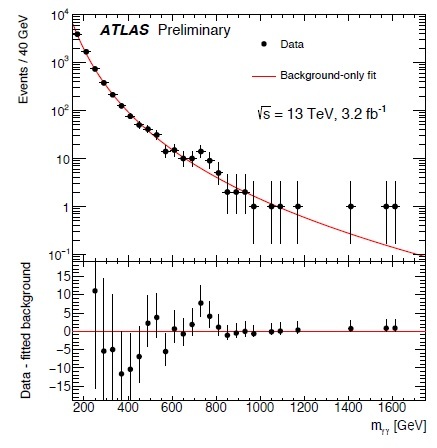
Quantum gravity appears today as the Holy Grail of physics. This is so far detached from any possible experimental result but with a lot of attentions from truly remarkable people anyway. In some sense, if a physicist would like to know in her lifetime if her speculations are worth a Nobel prize, better to work elsewhere. Anyhow, we are curious people and we would like to know how does the machinery of space-time work this because to have an engineering of space-time would make do to our civilization a significant leap beyond.
A fine recount of the current theoretical proposals has been rapidly presented by Ethan Siegel in his blog. It is interesting to notice that the two most prominent proposals, string theory and loop quantum gravity, share the same difficulty: They are not able to recover the low-energy limit. For string theory this is a severe drawback as here people ask for a fully unified theory of all the interactions. Loop quantum gravity is more limited in scope and so, one can think to fix the problem in a near future. But of all the proposals Siegel is considering, he is missing the most promising one: Non-commutative geometry. This mathematical idea is due to Alain Connes and earned him a Fields medal. So far, this is the only mathematical framework from which one can rederive the full Standard Model with all its particle content properly coupled to the Einstein’s general relativity. This formulation works with a classical gravitational field and so, one can possibly ask where quantized gravity could come out. Indeed, quite recently, Connes, Chamseddine and Mukhanov (see here and here), were able to show that, in the context of non-commutative geometry, a Riemannian manifold results quantized in unitary volumes of two kind of spheres. The reason why there are two kind of unitary volumes is due to the need to have a charge conjugation operator and this implies that these volumes yield the units
problem in a near future. But of all the proposals Siegel is considering, he is missing the most promising one: Non-commutative geometry. This mathematical idea is due to Alain Connes and earned him a Fields medal. So far, this is the only mathematical framework from which one can rederive the full Standard Model with all its particle content properly coupled to the Einstein’s general relativity. This formulation works with a classical gravitational field and so, one can possibly ask where quantized gravity could come out. Indeed, quite recently, Connes, Chamseddine and Mukhanov (see here and here), were able to show that, in the context of non-commutative geometry, a Riemannian manifold results quantized in unitary volumes of two kind of spheres. The reason why there are two kind of unitary volumes is due to the need to have a charge conjugation operator and this implies that these volumes yield the units  in the spectrum. This provides the foundations for a future quantum gravity that is fully consistent from the start: The reason is that non-commutative geometry generates renormalizable theories!
in the spectrum. This provides the foundations for a future quantum gravity that is fully consistent from the start: The reason is that non-commutative geometry generates renormalizable theories!
The reason for my interest in non-commutative geometry arises exactly from this. Two years ago, I, Alfonso Farina and Matteo Sedehi obtained a publication about the possibility that a complex stochastic process is at the foundations of quantum mechanics (see here and here). We described such a process like the square root of a Brownian motion and so, a Bernoulli process appeared producing the factor 1 or i depending on the sign of the steps of the Brownian motion. This seemed to generate some deep understanding about space-time. Indeed, the work by Connes, Chamseddine and Mukhanov has that understanding and what appeared like a square root process of a Brownian motion today is just the motion of a particle on a non-commutative manifold. Here one has simply a combination of a Clifford algebra, that of Dirac’s matrices, a Wiener process and the Bernoulli process representing the scattering between these randomly distributed quantized volumes. Quantum mechanics is so fundamental that its derivation from a geometrical structure with added some mathematics from stochastic processes makes a case for non-commutative geometry as a serious proposal for quantum gravity.
I hope to give an account of this deep connection in a near future. This appears a rather exciting new avenue to pursue.
Ali H. Chamseddine, Alain Connes, & Viatcheslav Mukhanov (2014). Quanta of Geometry: Noncommutative Aspects Phys. Rev. Lett. 114 (2015) 9, 091302 arXiv: 1409.2471v4
Ali H. Chamseddine, Alain Connes, & Viatcheslav Mukhanov (2014). Geometry and the Quantum: Basics JHEP 12 (2014) 098 arXiv: 1411.0977v1
Farina, A., Frasca, M., & Sedehi, M. (2013). Solving Schrödinger equation via Tartaglia/Pascal triangle: a possible link between stochastic processing and quantum mechanics Signal, Image and Video Processing, 8 (1), 27-37 DOI: 10.1007/s11760-013-0473-y



 Posted by mfrasca
Posted by mfrasca  problem in a near future. But of all the proposals Siegel is considering, he is missing the most promising one:
problem in a near future. But of all the proposals Siegel is considering, he is missing the most promising one: 

